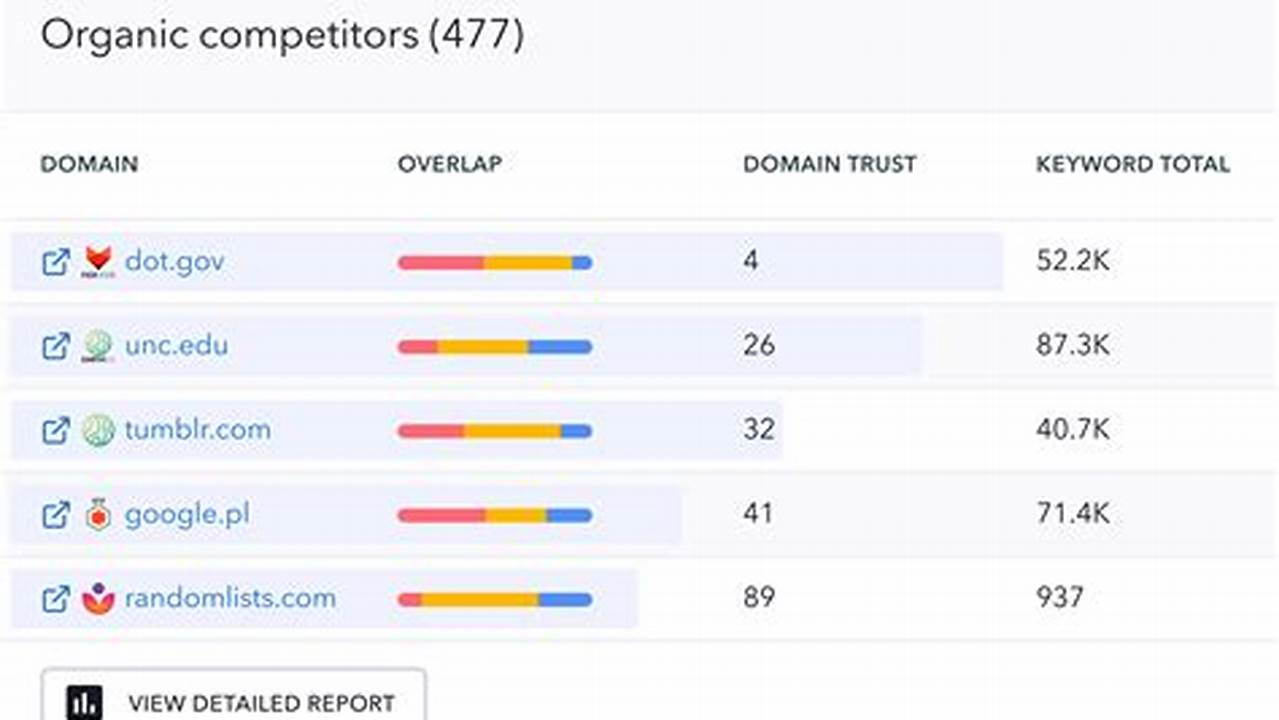Understanding the competitive landscape is crucial for successful Search Engine Optimization (SEO). Effective competitor analysis provides valuable insights into strategies that work, allowing businesses to refine their own approaches and improve online visibility. Selecting the right tools for this task is paramount, enabling efficient data gathering and analysis.
1. Keyword Research Capabilities
Robust keyword research features within competitor analysis tools allow for the identification of keywords competitors are ranking for, uncovering potential opportunities and informing keyword strategy.
2. Backlink Analysis
Examining competitor backlink profiles reveals their link-building strategies and identifies high-quality link opportunities.
3. Content Analysis
Evaluating competitor content reveals content gaps and informs content strategy, enabling the creation of superior, more engaging content.
4. Rank Tracking
Monitoring competitor rankings over time provides insights into the effectiveness of their SEO efforts and informs adjustments to one’s own strategy.
5. Traffic Analysis
Understanding competitor traffic sources and volume provides a benchmark for performance and helps identify potential traffic opportunities.
6. Social Media Analysis
Analyzing competitor social media presence reveals audience engagement patterns and informs social media strategy.
7. Technical SEO Audit Features
Tools that offer technical SEO auditing capabilities for competitor websites can highlight technical issues impacting their performance, providing insights for improvement.
8. User Interface and Experience
An intuitive and user-friendly interface is crucial for efficient data analysis and interpretation.
9. Reporting and Data Visualization
Clear and concise reporting features facilitate easy understanding of data and effective communication of insights.
10. Pricing and Value
Choosing a tool that offers the necessary features at a suitable price point is crucial for maximizing return on investment.
Tip 1: Define Clear Objectives
Before selecting a tool, establish specific goals for competitor analysis to ensure the chosen tool aligns with those objectives.
Tip 2: Consider Data Integration
Evaluate the tool’s integration capabilities with other marketing platforms to streamline data analysis and reporting.
Tip 3: Trial and Evaluation
Utilize free trials or demo versions to thoroughly test the tool’s features and ensure it meets specific requirements.
Tip 4: Focus on Actionable Insights
Prioritize tools that provide actionable insights, enabling data-driven decisions and impactful strategy adjustments.
How can competitor analysis improve SEO strategy?
Competitor analysis provides valuable data on effective keywords, content strategies, and backlink profiles, allowing for data-driven optimization and improved search engine rankings.
What are the key metrics to analyze in competitor analysis?
Key metrics include keyword rankings, backlink profiles, content performance, traffic sources, and social media engagement.
How frequently should competitor analysis be conducted?
The frequency of competitor analysis depends on the industry and competitive landscape, but regular monitoring, typically monthly or quarterly, is recommended.
What are the common pitfalls to avoid in competitor analysis?
Common pitfalls include focusing solely on large competitors, neglecting niche competitors, and failing to translate data into actionable strategies.
How can competitor analysis tools help with content creation?
These tools help identify content gaps and understand what type of content resonates with the target audience, informing content strategy and improving content quality.
How does competitor analysis contribute to better keyword targeting?
Competitor analysis reveals which keywords competitors are successfully ranking for, helping businesses identify valuable keywords and optimize their content accordingly.
By leveraging effective competitor analysis tools and focusing on actionable insights, businesses can gain a significant competitive edge in the digital landscape, improve search engine rankings, and drive organic traffic growth.

Leave a Reply